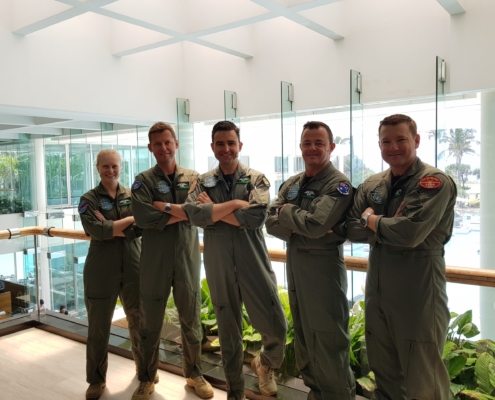 https://www.afterburner.com/wp-content/uploads/2024/10/2462040_PhotoshopImagesBlackFlightSuits_03_091524.png
2369
3553
Ansley Anchors
/wp-content/uploads/2024/07/Afterburner-Logo-Resize-Fullcolor-300x93.png
Ansley Anchors2024-10-31 08:56:592024-11-22 15:01:02Afterburner Black
https://www.afterburner.com/wp-content/uploads/2024/10/2462040_PhotoshopImagesBlackFlightSuits_03_091524.png
2369
3553
Ansley Anchors
/wp-content/uploads/2024/07/Afterburner-Logo-Resize-Fullcolor-300x93.png
Ansley Anchors2024-10-31 08:56:592024-11-22 15:01:02Afterburner Black
Lessons Learned on the Front Lines of Organizational Change Management
It is no secret that change in organizations is happening faster than ever. This requires organizations to proactively adjust and make dramatic shifts to stay ahead of those rates of change. The forces driving change (Technological/Commoditization/Globalization/Regionalization/Localization/Digitalization) are more complex, disruptive, and pervasive than ever and reach every corner of every organization and create the pressing need for organizational change management.
According to research, less than a quarter of organizational-redesign efforts succeed (McKinsey, 2015). Forty-four percent run out of steam after getting under way, while a third fail to meet objectives or improve performance after implementation. As a result, the rewards to winners are coming bigger and faster while the losers scramble to survive. In fact, according to research conducted by BCG, public companies traded in the US now have a 1 in 3 chance of failing in the next five years! The prospect of leading organizational change in such a complex and uncertain environment can seem overwhelming for leaders. It need not be.
What follows is the first in a series of simple Lessons Learned designed to help leaders navigate the basics of change management so that their organizations can survive, thrive, and dominate their markets! These Lessons Learned were developed by the Afterburner team on the global business “battlefield” as we worked side by side with our clients to successfully execute their organizational change management initiatives.
Lesson Learned #1 – Create a common mental model and shared language for success
The number one Lesson Learned for leaders embarking on any type of organizational change management initiative is to start with “the end in mind’ by first clearly defining the intended effects of the organizational change management initiative. We often work with organizations that have devoted significant resources (internal and external) developing their organizational transformational plans. The plans are often detailed in extensive PowerPoint decks that include benchmarking, analytics, and impressive “Pillar” diagrams outlining updated strategic initiatives and vision. What is lacking is a clear depiction of the destination that the organization is collectively pursuing, a “North Star” to drive inspired alignment and engagement across the organization. As leaders it is critical to paint a clear and compelling picture of what success looks like when the organization successfully executes the organizational change initiative. At Afterburner, we call this picture of success the “High Definition Destination” (HDD). It is a clear and compelling picture of the future that allows the entire organization to create a common mental model and shared language for success in order to align their plans and efforts to achieve that HDD.
It is also important to develop the new picture of success in an open and collaborative manner. Very often we see clients develop change management initiatives by engaging senior leadership and retaining outside advisors to drive a top-down approach to the initiative. The process is not conducted in an open and collaborative environment, often resulting in mistrust and a lack of alignment throughout the organization. We strongly encourage our clients to include multiple levels of the organization (at least three echelons of “rank”) in helping define the new picture of success. Connecting the HDD, strategy, and daily execution with clear line of sight will build engagement and inspired alignment throughout the organization. It will also support the challenging task of persuading team members to adapt and align their beliefs and behaviors to the new picture of success, thereby increasing both control over outcomes and the probability of success in executing the change management initiative.
The picture of success should be so clear and compelling that it gets people excited to think about what the future will be like when the transformation is completed. During a recent engagement with a leading global tech company undergoing a massive organizational transformation initiative, we worked with multiple levels of the leadership team to develop their picture of future success three years in the future. As the team took turns articulating the picture of success during the wrap-up of our initial planning session, the entire team rose to their feet in thunderous applause acknowledging the fact they had never been as aligned and excited about the future of their organization!
As leaders, we often think that we have outlined what success looks like for our teams but does everyone in your organization really understand what success looks like? Do they understand the intent behind it all? Do they understand how their day-to-day work or their performance on a specific task or project relates to the “Big Picture?” Try this simple exercise with three or four of your team members to see how aligned your team is to the future picture of success. Ask each team member to describe in detail what success looks like for the organization and how their activities support achieving this future state. You will often find that he or she has a different definition of success than the leadership team expected. The idea is to provide great clarity so that leaders can cascade the vision throughout the organization and immediately drive greater alignment and engagement by empowering the organization to act upon the HDD or vision. In the military, when planning a mission, we call this picture of success “Commanders Intent” (at Afterburner, we call it “Leader’s Intent”). I planned hundreds of operations as an Army officer and started each and every operation by first defining Commander’s Intent. My objective was to describe what mission success looked like in such a clear and compelling manner that every member of my team could align their actions and execute the mission even if they are the last team member standing.
Using Organizational Change Leadership in Your Business
Organizational change leadership initiatives can be overwhelming. It need not be. This Lesson Learned is intended to offer simple, actionable steps that leaders can apply as they transform their organization. Take a moment to consider if you have rallied your organization’s change management initiative around a clear and compelling picture of the future that allows the entire organization to create a common mental model and shared language for success in order to align their plans and efforts to achieve that HDD!
Share This Post
More Like This
 https://www.afterburner.com/wp-content/uploads/2024/10/2462040_PhotoshopImagesBlackFlightSuits_03_091524.png
2369
3553
Ansley Anchors
/wp-content/uploads/2024/07/Afterburner-Logo-Resize-Fullcolor-300x93.png
Ansley Anchors2024-10-31 08:56:592024-11-22 15:01:02Afterburner Black
https://www.afterburner.com/wp-content/uploads/2024/10/2462040_PhotoshopImagesBlackFlightSuits_03_091524.png
2369
3553
Ansley Anchors
/wp-content/uploads/2024/07/Afterburner-Logo-Resize-Fullcolor-300x93.png
Ansley Anchors2024-10-31 08:56:592024-11-22 15:01:02Afterburner Black https://www.afterburner.com/wp-content/uploads/2024/09/Audience-reaction-2.jpeg
1365
2048
Nate Riggins
/wp-content/uploads/2024/07/Afterburner-Logo-Resize-Fullcolor-300x93.png
Nate Riggins2024-02-09 17:02:342024-11-22 15:01:03Four Key Items to Include in Your Next Corporate Event
https://www.afterburner.com/wp-content/uploads/2024/09/Audience-reaction-2.jpeg
1365
2048
Nate Riggins
/wp-content/uploads/2024/07/Afterburner-Logo-Resize-Fullcolor-300x93.png
Nate Riggins2024-02-09 17:02:342024-11-22 15:01:03Four Key Items to Include in Your Next Corporate Event https://www.afterburner.com/wp-content/uploads/2024/09/embracing-failure-afterburner-1-scaled-1.jpg
1920
2560
Nate Riggins
/wp-content/uploads/2024/07/Afterburner-Logo-Resize-Fullcolor-300x93.png
Nate Riggins2024-01-09 22:52:542024-11-22 15:01:03Reimagining Your Sales Kickoff: Infusing Innovation and Connection
https://www.afterburner.com/wp-content/uploads/2024/09/embracing-failure-afterburner-1-scaled-1.jpg
1920
2560
Nate Riggins
/wp-content/uploads/2024/07/Afterburner-Logo-Resize-Fullcolor-300x93.png
Nate Riggins2024-01-09 22:52:542024-11-22 15:01:03Reimagining Your Sales Kickoff: Infusing Innovation and Connection https://www.afterburner.com/wp-content/uploads/2024/09/fortune-cookies-1400x933-1.jpeg
933
1400
Nate Riggins
/wp-content/uploads/2024/07/Afterburner-Logo-Resize-Fullcolor-300x93.png
Nate Riggins2024-01-02 18:24:072024-11-22 15:01:07Want to make better business predictions? Flawless Execution is the answer.
https://www.afterburner.com/wp-content/uploads/2024/09/fortune-cookies-1400x933-1.jpeg
933
1400
Nate Riggins
/wp-content/uploads/2024/07/Afterburner-Logo-Resize-Fullcolor-300x93.png
Nate Riggins2024-01-02 18:24:072024-11-22 15:01:07Want to make better business predictions? Flawless Execution is the answer. https://www.afterburner.com/wp-content/uploads/2024/09/three-fighter-jets-maneuvering-in-sequence-min-1.jpeg
1133
1920
Nate Riggins
/wp-content/uploads/2024/07/Afterburner-Logo-Resize-Fullcolor-300x93.png
Nate Riggins2024-01-02 16:08:452024-11-22 15:01:07How to Build Accountability in the Workplace – and Why It Matters
https://www.afterburner.com/wp-content/uploads/2024/09/three-fighter-jets-maneuvering-in-sequence-min-1.jpeg
1133
1920
Nate Riggins
/wp-content/uploads/2024/07/Afterburner-Logo-Resize-Fullcolor-300x93.png
Nate Riggins2024-01-02 16:08:452024-11-22 15:01:07How to Build Accountability in the Workplace – and Why It Matters https://www.afterburner.com/wp-content/uploads/2024/09/Christian-_Boo_-Boucousis-on-stage-1.jpeg
1066
1600
Nate Riggins
/wp-content/uploads/2024/07/Afterburner-Logo-Resize-Fullcolor-300x93.png
Nate Riggins2024-01-01 17:03:122024-11-22 15:01:08How to Pick the Right Guest Speaker for Your Event
https://www.afterburner.com/wp-content/uploads/2024/09/Christian-_Boo_-Boucousis-on-stage-1.jpeg
1066
1600
Nate Riggins
/wp-content/uploads/2024/07/Afterburner-Logo-Resize-Fullcolor-300x93.png
Nate Riggins2024-01-01 17:03:122024-11-22 15:01:08How to Pick the Right Guest Speaker for Your Event https://www.afterburner.com/wp-content/uploads/2024/09/purposeful-action-afterburner-1.jpg
1080
1920
Nate Riggins
/wp-content/uploads/2024/07/Afterburner-Logo-Resize-Fullcolor-300x93.png
Nate Riggins2023-12-21 15:23:142024-11-22 15:01:09Unlocking the Power of Purposeful Action in Work and Life
https://www.afterburner.com/wp-content/uploads/2024/09/purposeful-action-afterburner-1.jpg
1080
1920
Nate Riggins
/wp-content/uploads/2024/07/Afterburner-Logo-Resize-Fullcolor-300x93.png
Nate Riggins2023-12-21 15:23:142024-11-22 15:01:09Unlocking the Power of Purposeful Action in Work and Life https://www.afterburner.com/wp-content/uploads/2024/09/how-to-make-better-decisions-afterburner-1.jpg
1080
1920
Nate Riggins
/wp-content/uploads/2024/07/Afterburner-Logo-Resize-Fullcolor-300x93.png
Nate Riggins2023-12-12 17:38:372024-11-22 15:01:09Empowering Decisions Through Debrief Culture
https://www.afterburner.com/wp-content/uploads/2024/09/how-to-make-better-decisions-afterburner-1.jpg
1080
1920
Nate Riggins
/wp-content/uploads/2024/07/Afterburner-Logo-Resize-Fullcolor-300x93.png
Nate Riggins2023-12-12 17:38:372024-11-22 15:01:09Empowering Decisions Through Debrief Culture
Mastering Decision-Making in a World of Chaos: Lessons from Harvard Business Review Magazine
Business Culture, Leadership, MotivationAbout Us
Building Strong Teams Through the Guidance of Fighter Pilot Keynote Speakers.

